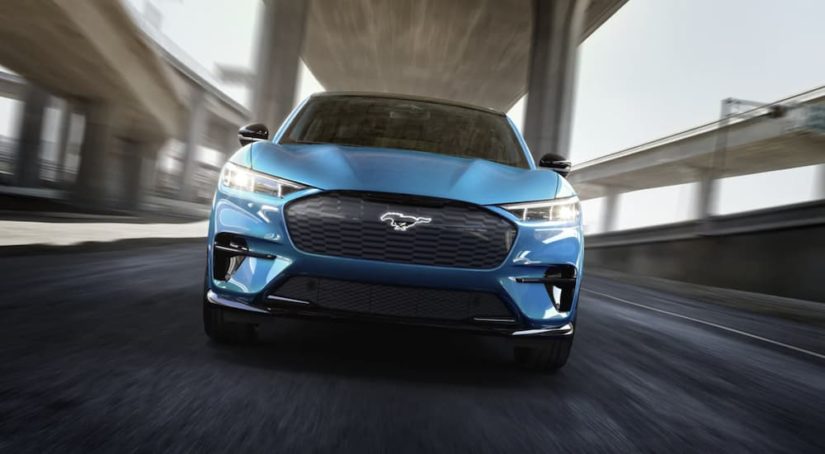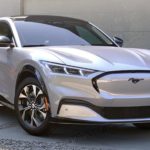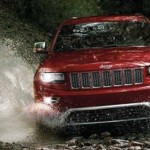In 2021, Ford turned the EV market on its head with the introduction of the Mach-E. It’s an extension of the Mustang name, which, historically speaking, is the antithesis of efficient driving. The release of this new EV went off without a hitch, though, selling in astronomical numbers to make it one of the most sought-after EVs during its debut model year.
The 2023 Ford Mustang Mach-E continues to give EVs a good name, pairing power with technology for a truly exhilarating combination. The new vehicle backed by a familiar brand has undoubtedly helped some EV skeptics ease their iron grip on the performance of the past, helping to pave the way for EVs trying to gain a larger share of the market. If you’re on the fence about buying an EV yourself, or you want to help convert the hearts and minds of your V8-loving friends, the best thing you can do is arm yourself with knowledge. Here’s everything you need to know about the new Mustang Mach-E.
Powertrain
Power, or a lack thereof, is one of the things that prevents would-be EV fans from picking up a greener vehicle. It makes sense; for a lot of people, driving offers a thrilling escape, something you just can’t get from the likes of a Prius. However, the Mustang Mach-E is a far cry from the good-mannered EVs hitting the market at the turn of the century.
The 2023 Mustang Mach-E has a few powertrain options to choose from, combining two different battery packs with either rear-wheel drive or all-wheel drive. The standard range option consists of a 70 kWh battery that produces 266 hp and either 317 lb-ft or 428 lb-ft of torque with rear-wheel or all-wheel drive configurations, respectively. The extended range option uses a 91 kWh battery that produces 290 hp with rear-wheel drive, 346 hp with all-wheel drive, and up to 480 hp when powering the GT and GT Performance Edition models. The extended-range battery pack creates the same amount of torque as the standard-range battery, except for the GTs and GT Performance Editions, which get 600 lb-ft and 634 lb-ft of torque, respectively.
Regardless of the powertrain, the Mustang Mach-E is fast. Even at the slower end of its capabilities, its 0-60 MPH time is still 5.8 seconds. The quickest version of this electric powerhouse shaves off a full two seconds from that time when launching off the line.
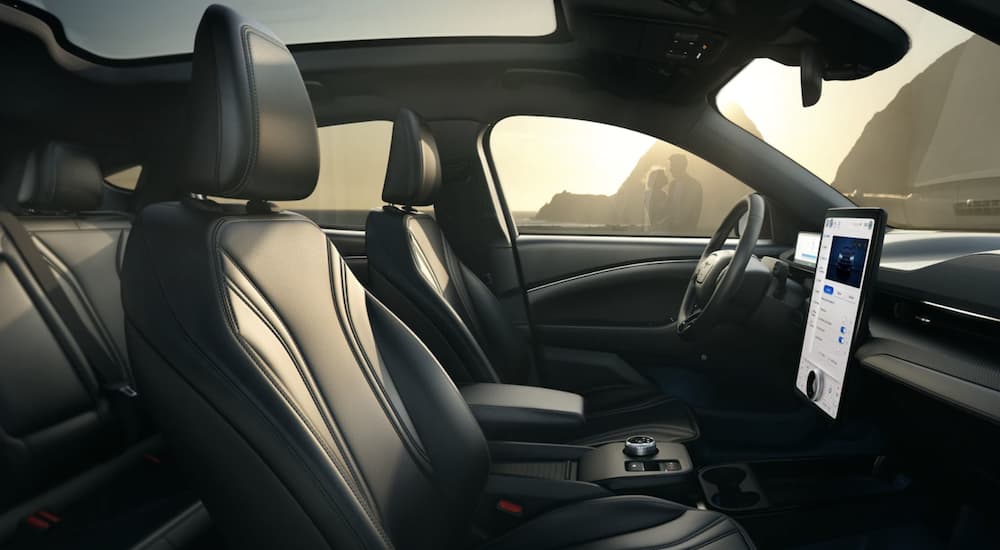
Range
Aside from power, concerns over driving range are another obstacle standing between drivers and EVs. Owning a vehicle that requires dozens of stops to recharge to make it through a road trip is not practical. Fortunately, EV ranges have improved to respectable numbers since the technology debuted, and the Mustang Mach-E benefits from these more-efficient batteries.
Range, like horsepower and torque, will vary based on the Mach-E’s powertrain. At its most efficient, it gets an EPA-rated 312 miles on a full charge. This range is achieved by the California Route 1, explicitly designed to maximize range with its extended-range battery and all-wheel drive. On other trims, all-wheel drive and the larger battery average 290 miles on a full charge, while extended-range, rear-wheel drive Mach-Es get 306 miles on a full charge. For vehicles with the standard range battery and all-wheel drive, the range is 224 miles, and with rear-wheel drive, that’s bumped up to 247 miles. The GT and GT Performance Edition trims are again the exceptions, getting 270 miles (GT) and 260 miles (GT Performance Edition) with their extended range, all-wheel drive powertrains.
As far as modern EVs go, these ranges push the Mach-E well into the front half of the pack. Its top-end range is competitive with some of the longest-range EVs available, especially for the price. The standard range Mach-E’s are pretty decent, too—enough to get you through a jaunt or two before it’s time to recharge.
Charging
How is all that power and range achieved? By charging those batteries with electricity. Charging is probably the least exciting part of owning an EV, but it can’t be overlooked. If you’ve never owned an EV, you might be unsure what that process looks like. Is it as simple as just plugging it in and letting the charger do its thing? Yes, and no.
The Mustang Mach-E has a couple of options for charging at home. It comes standard with the Ford Mobile Charger, which is compatible with either a 240V outlet or your regular 120V outlet. If installed with a 240V outlet, you can expect around 20 miles of range per hour of charge. With a 120V outlet, that drops to three miles of range per hour of charge. While the Ford Mobile Charger can work with an existing 120V outlet, Ford recommends having a licensed electrician install the 240V outlet. Once installed, charging the Mach-E is as simple as plugging in a smartphone.
For faster recharging, there’s also the available Ford Connected Charge Station. It provides 28 miles of range per hour charged and has Bluetooth and Wi-Fi capabilities, so you can track progress and set charging schedules from your phone. Installing this system isn’t so simple, though. Unless you’re an electrician, you should outsource the labor to an expert.
Of course, charging from the comfort of your home won’t always be an option, and a lack of on-the-go charging stations undoubtedly takes away from the practicality of owning an EV. Automakers are combatting this by heavily investing in building the national charging network. For example, Ford’s Blue Oval network is compatible with many different chargers from different brands, including Electrify America, Greenlots, and EVGO. To help consolidate all these providers, Ford has developed an app that allows users to map out their routes while taking advantage of the 75,000-plus chargers available through the Blue Oval network.
The chargers work a little differently than home chargers; it’s not realistic to wait several hours to fully charge your vehicle when you’re halfway to Daytona Beach. The Blue Oval network minimizes downtime and includes public DC Fast Chargers, which get the job done in a matter of minutes as opposed to a matter of hours.
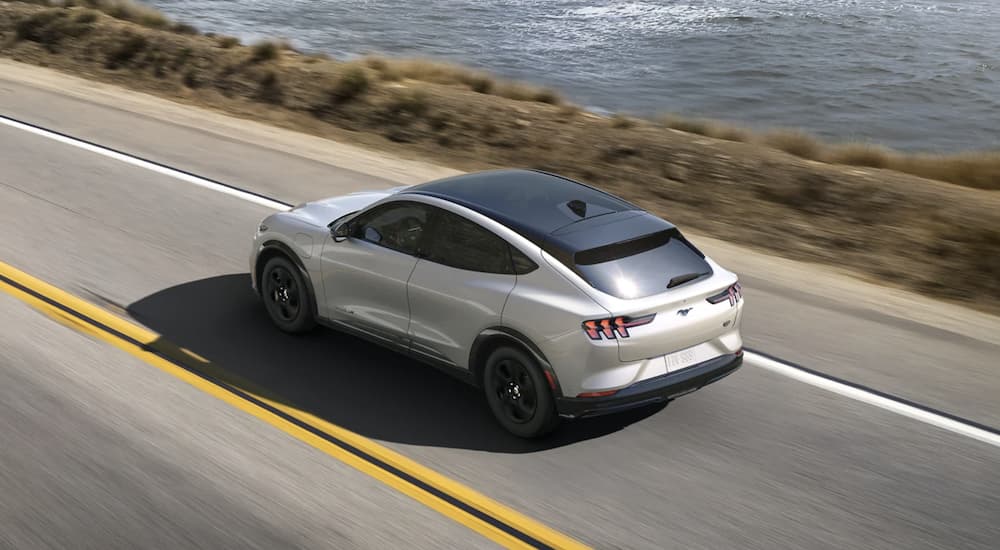
A Better Future for All Drivers
American automakers may have been a little slower to adopt EVs than our friends in Japan and Europe, but that’s changed in recent years. Major American automakers like Ford have doubled down on their commitment to a greener future. They are not only investing in new electric and hybrid vehicles, but they are also actively building and expanding the charging networks that make it possible for more drivers to own these vehicles.
It seems like American drivers put up the most resistance to EVs—so many people here have treasured memories associated with the thrilling performance of V8-powered pony cars. So when pioneers of the muscle car, like Ford and GM, embrace EV technology, it undoubtedly helps warm big-block-engine-loving hearts to the idea, too. What’s more, when these automakers commit to creating a wide range of EVs that offers both impressive range and pulse-racing power, it’s hard not to get excited about the future of EVs and the new memories we can make from the driver’s seat.
